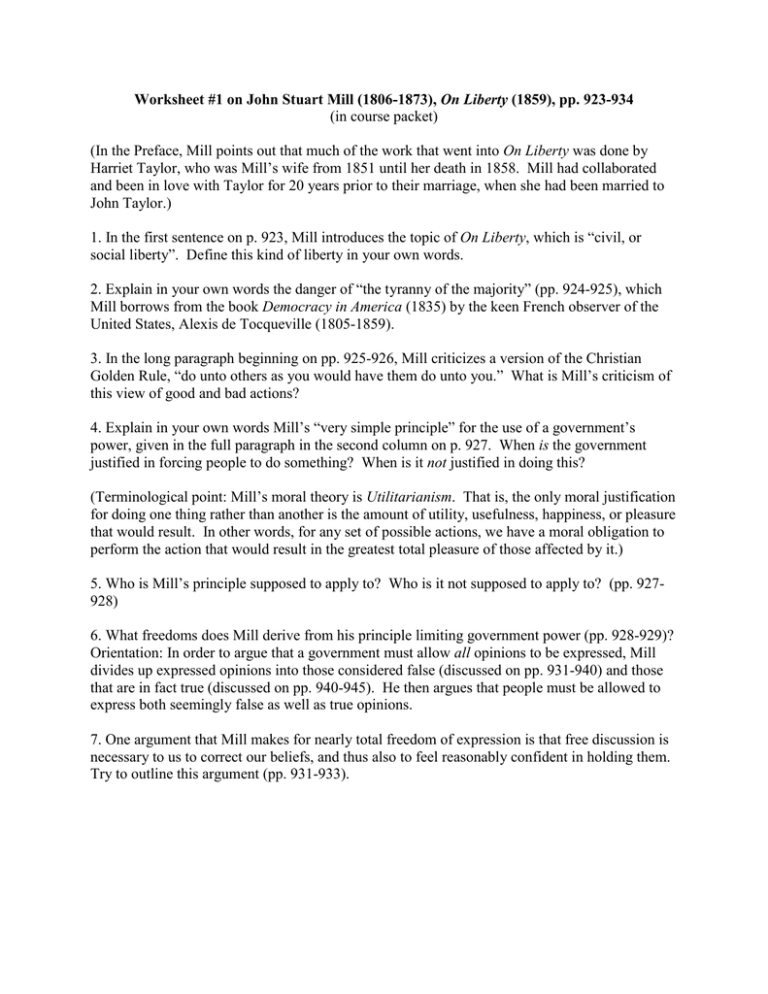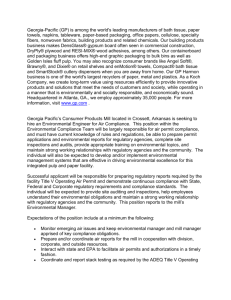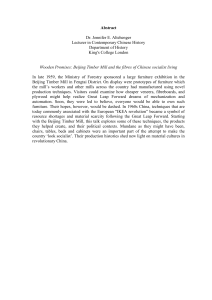On Liberty (in course packet)
advertisement

Worksheet #1 on John Stuart Mill (1806-1873), On Liberty (1859), pp. 923-934 (in course packet) (In the Preface, Mill points out that much of the work that went into On Liberty was done by Harriet Taylor, who was Mill’s wife from 1851 until her death in 1858. Mill had collaborated and been in love with Taylor for 20 years prior to their marriage, when she had been married to John Taylor.) 1. In the first sentence on p. 923, Mill introduces the topic of On Liberty, which is “civil, or social liberty”. Define this kind of liberty in your own words. 2. Explain in your own words the danger of “the tyranny of the majority” (pp. 924-925), which Mill borrows from the book Democracy in America (1835) by the keen French observer of the United States, Alexis de Tocqueville (1805-1859). 3. In the long paragraph beginning on pp. 925-926, Mill criticizes a version of the Christian Golden Rule, “do unto others as you would have them do unto you.” What is Mill’s criticism of this view of good and bad actions? 4. Explain in your own words Mill’s “very simple principle” for the use of a government’s power, given in the full paragraph in the second column on p. 927. When is the government justified in forcing people to do something? When is it not justified in doing this? (Terminological point: Mill’s moral theory is Utilitarianism. That is, the only moral justification for doing one thing rather than another is the amount of utility, usefulness, happiness, or pleasure that would result. In other words, for any set of possible actions, we have a moral obligation to perform the action that would result in the greatest total pleasure of those affected by it.) 5. Who is Mill’s principle supposed to apply to? Who is it not supposed to apply to? (pp. 927928) 6. What freedoms does Mill derive from his principle limiting government power (pp. 928-929)? Orientation: In order to argue that a government must allow all opinions to be expressed, Mill divides up expressed opinions into those considered false (discussed on pp. 931-940) and those that are in fact true (discussed on pp. 940-945). He then argues that people must be allowed to express both seemingly false as well as true opinions. 7. One argument that Mill makes for nearly total freedom of expression is that free discussion is necessary to us to correct our beliefs, and thus also to feel reasonably confident in holding them. Try to outline this argument (pp. 931-933).





